Welcome to the future: a time where we don’t vacuum the carpets, and little robots do it for us; we don’t drive cars because they all but drive themselves, and we don’t even really work anymore; because the tools that we’ve got at our disposal do all the work for us. Sweet.
Like when we want to nurture our leads, educate them on our product, and charm them towards that buy now button, a robot takes out all the legwork for us. That robot is really, really good at nurturing leads, and it means that we don’t need to sit watching customer accounts for certain behaviour, nor do we need to watch the clock before we fire out a perfectly-timed follow-up. That robot helps us run every aspect of our business.
That robot is called NetHunt CRM.
What is email lead nurturing? What is a drip campaign? What is a marketing email sequence?
Email lead nurturing (see also: email drip campaigns, marketing email sequences) involves establishing a strong relationship between a brand and its consumers. It occurs at each stage of the sales funnel; email sequences enrich the buying journey for both sides of a transaction.
For a business, the lead moves through the pipeline with less friction and it can provide valuable lead data about their preferences and needs. For those leads, email sequence nurturing provides a personal, high-touch experience and enhances their trust in a brand.
Email sequence lead nurturing doesn’t just work in terms of sales, but it also…
- Increases email open rates.
- Keeps you fresh in a prospect’s mind.
- Provides instant results for prospects.
- Opens up an opportunity to inform and entertain leads.
The point is that not everybody who visits your website is going to be purchase-ready. Give or take, only about 3% of a target market is ready to buy at one, given moment. Lead nurturing is all about making sure that the other 97% of your audience gets there in the end. It’s about convincing them into action through the three Es of email sequencing. Education. Entertainment. Especial.
Easy. The following guide gives you the lowdown on automatic email sequence nurturing. From how to get yourself prepared for a sequence, all the way to hitting that send button in NetHunt CRM, and watching your email metrics hit whole new highs.
Let’s get growing!
How to nurture leads through email.
As with most things in marketing, most of the work involved in email sequences come before the actual sending of a drip marketing campaign. You need to plan; think about it. Ask yourself what your leads need, what they want, what pains they feel, and how your product helps them. After that, you should have a clear idea of which kind of email sequences you need to send.
Step 1. Choose which email drip campaign you want to send.
It’s safe to say, there are a fair few email sequences to choose from. To make things simpler, we can categorise our email sequences in two different groups. We can have time-based sequences and trigger-based sequences. We can see them in the following email sequence templates, outlining some of the best email marketing sequences around.
- A time-based sequence is set to automatically send between different, set lengths of time.
- A trigger-based sequence is set to automatically send when a lead exhibits certain behaviour or engages in certain activities.
1. The Welcoming, Onboarding Sequence
Welcome emails are a free hit. Out of all the emails you send to your subscribers, the first one always, always has the best open and click-through-rates. So, you’ve got a choice. Make it good like ours below, and entice a recipient to open the next one in the drip campaign... or don’t, and never have another email opened again by that same recipient.
This is a trigger-based and time-based sequence.
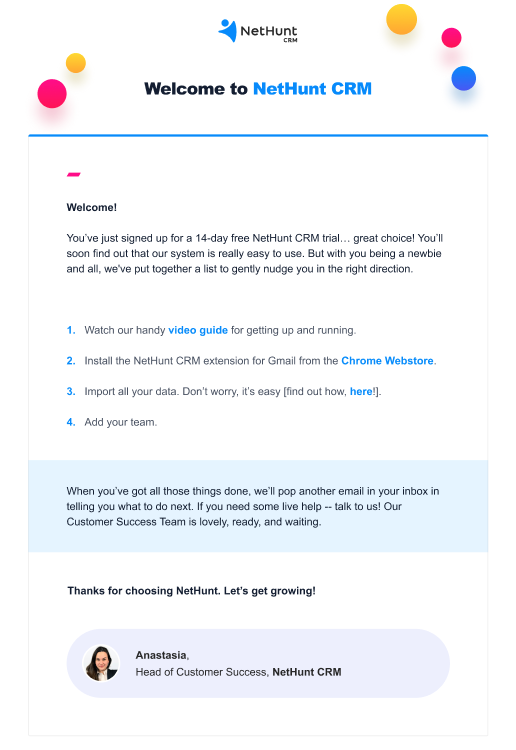
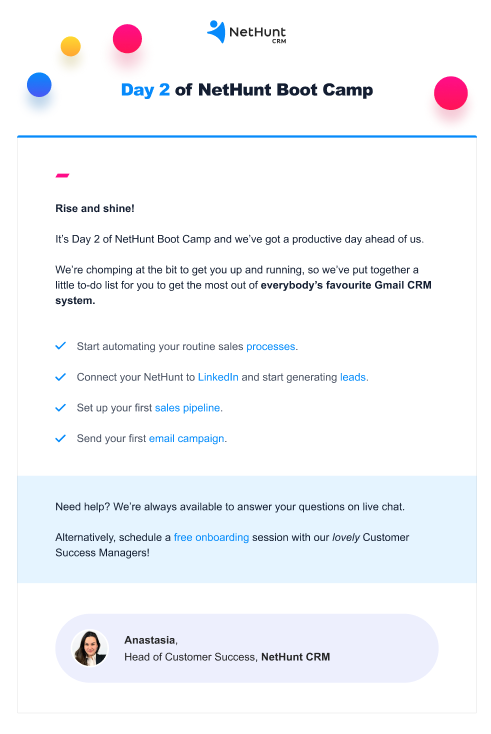
2. The Cart Abandonment Sequence
An abandoned cart email is a follow-up message sent to someone who leaves a website without purchasing the items in their online shopping cart. Abandoned cart drip sequences are typically sent to people who leave part-way through checkout. These email sequences are important because they help a business to recover any amount of custom that’s been lost at the final hurdle.
This is a trigger-based sequence.
3. The Constant Content Sequence
Give it to me, baby. Phwoar red-hot content. Loads of it. Every month. Every fortnight. Whatever, whenever. Content educates your customers, both about a product and their industry. It keeps them sweet. It makes them aware of what’s going on with your product, and it hits that little refresh button in their brain to remind them that hell yeah, you still exist.
This is a time-based sequence.
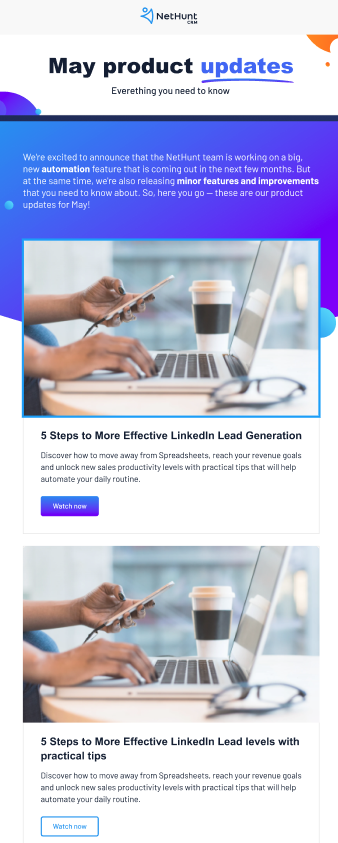
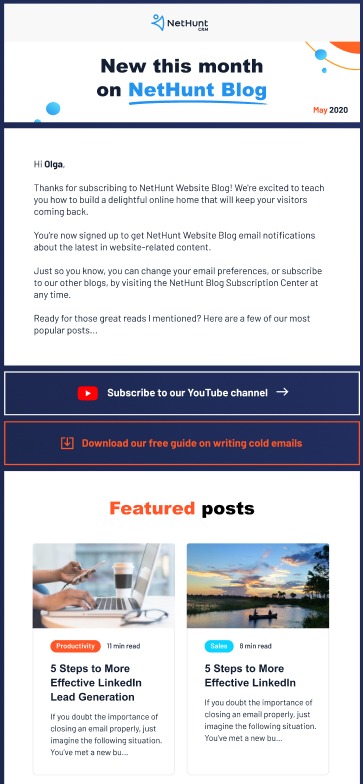
4. The Post-Free Trial Sequence
In the SaaS sphere, there're not many more want-to-punch-someone-in-the-face situations than when a customer signs up for your free trial, quite clearly uses it a lot, uses a fair portion of your support team’s time, energy, and nerves; only to never sign up for the full product. It happens to everyone, but a carefully sent and well-timed email sequence can be enough to push them into buying action.
This is a time-based sequence.
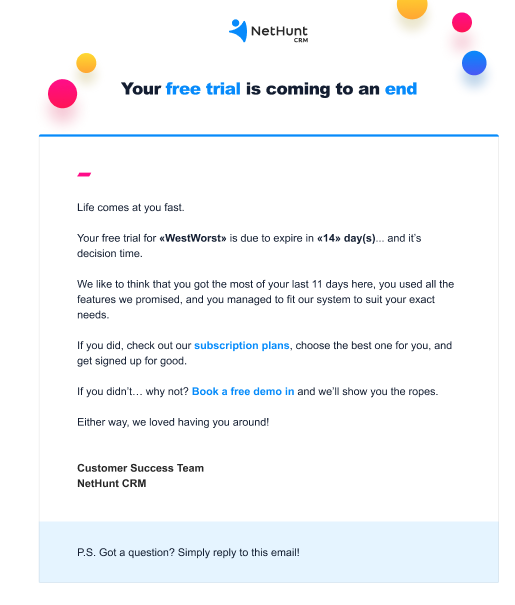
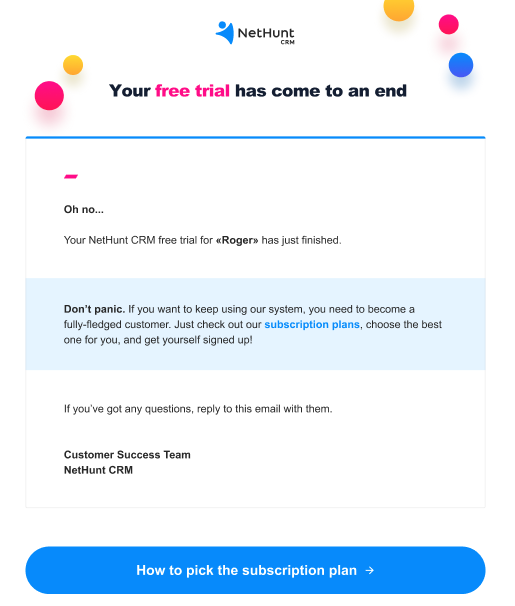
5. The Event Sequence
Coronavirus happened, and now we’re not allowed to have fun anymore. Well, that’s not true if you find online events fun. There’re loads of them knocking about, and they work as an engaging, icebreaking environment to meet and nurture leads even further. They require a grandstand build-up to get as many sign-ups as possible, and an email sequence is essential to getting bums in seats.
This is a trigger-based and time-based sequence.
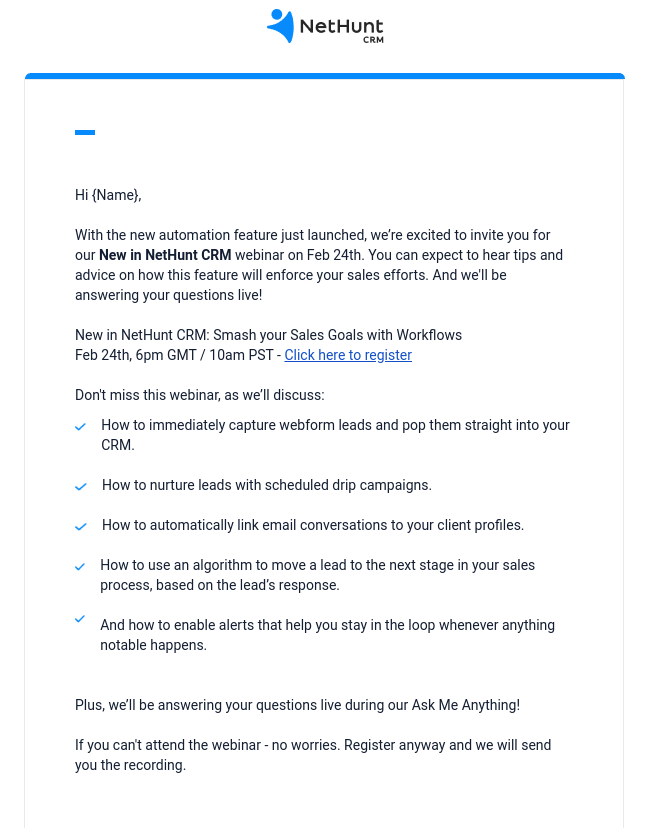
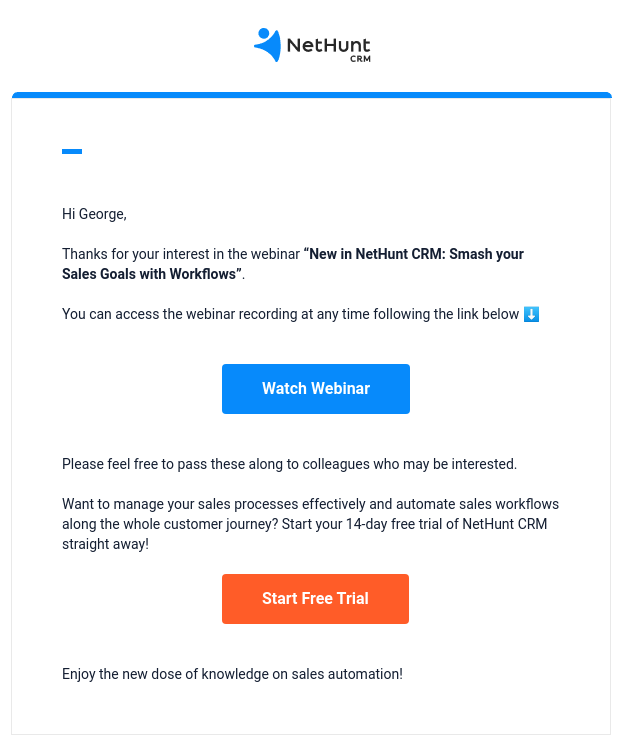
6. The Post-Purchase Sequence
There are quite a few different directions your post-purchase sequences can go, but it’s always obvious that you need one. The conversation doesn’t end with somebody buying your product; it begins. Asking them to leave a review of a product when they’re ready is only ever a good thing for your business. Asking them to join a user community is only ever a good thing for them.
This is a time-based sequence.
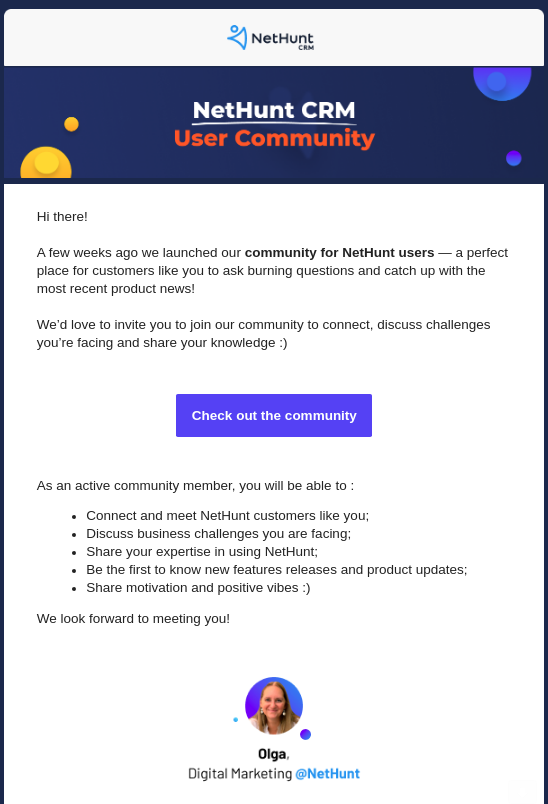
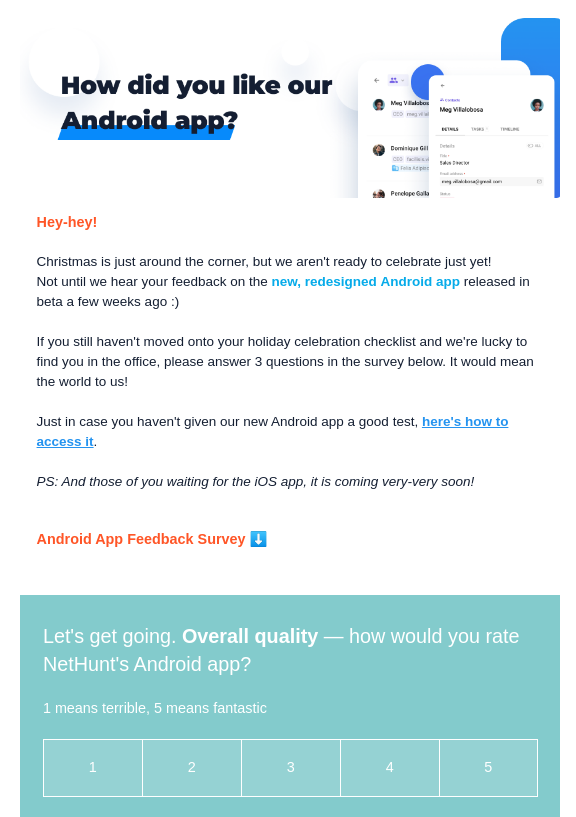
Before we go anywhere near our keyboard, we should think about our recipients first.
Step 2. Choose and segment your audience.
List segmentation is a key attribute for any successful marketing email sequence sent out. By identifying subgroups within an audience, marketers can tailor and personalise their messages for the best chance of engagement, conversion, and a stronger audience-brand relationship being formed. The more we segment, the more specific we can make our lead nurturing outreach. Still, we can over-segment, meaning we put all our eggs in one basket and never nurture efficiently enough.
Because when you try to please everybody, you end up pleasing nobody at all. Content that tries to hit as many information points as possible scatters its message, dilutes it, and ends up being flat, boring, and unspecific. Segmentation helps marketers to engage, relate, and resonate with their audience. It also increases open rates and click-through-rates (CTR).
In NetHunt CRM you can segment your audience by any which way you choose. As long as their CRM records are filled out with the relevant data you wish to segment by, you can choose exactly which criteria of contact you want to send your emails to.
- Let’s imagine we’re sending an email to everybody in our database that’s a CEO of a business that’s our partner. We need to segment our database accordingly. Each contact record, if filled out correctly, should contain a field with their job position, and their customer status.
- I simply head to the Contacts and create a view. I filter by status, partner; I filter by position, CEO.
- Done. I can save this view and target them with personalised bulk email campaigns whenever I need to. The segment automatically updates whenever a new contact is added to the database. Easy!

Step 3. Create your lead nurturing sequence in Workflows by NetHunt CRM
Turns out our tidy little Workflows feature also works as an automatic email follow-up software. With no complex integrations, we’ve managed to eliminate those itty-bitty jobs, like remembering to send email sequences, completely out of your working day. In an intuitive workflow builder, you can set both trigger-based and time-based email sequences to nurture leads any which way you want.
- Start a Workflow.
Head to the left-hand side panel in your NetHunt CRM workspace, click workflows, add a new one, and give your Workflow a name. - Add a starting trigger.
In our case, it’ll be when a new record is created. - Create a condition to stop.
Contacts need to fall out of this Workflow, specifically when their status has changed. For all intents and purposes, this means they have been “nurtured”. To do this, we need to split our Workflow into three different branches. We hit add action, and choose to split path. Branch A is the main one. - Branch B the one that will be checking for an incoming email. Branch C - the one that will be checking for the Status field change. In Branch B, we add action 'Wait for email' and click 'Save’. In Branch C, we add action 'Wait for update' in the Status field from New to Prospecting.
- Create an email.
In Banch A, add action and choose to send an email. Choose who to send an email from. If you have multiple sales managers in your team and would like each contact to be emailed by their own manager, check the 'Personalize sender' box and pick the required field. Pick who you want to send the email to, then enter the subject line and the email text. You can use templates and insert macros if you need to. Finally, hit save. - Let’s add a few more emails to our sequence before adding waiting times between the emails. We don’t want them to be sent one right after another. Click on the '+' sign after the first email and choose 'Wait for (time)'. Type in the how many days to wait should be between the emails, and then hit 'Save'.
- Complete the Workflow.
In order to complete the workflow, at the end of every branch we need to add action 'End Workflow'. Once the workflow is active, you can test it by adding a new Contact to your folder and seeing whether emails are being sent out.
If you’re not a user yet, all you need to do is sign up for a 14 day free trial. Once you’re up and running, you’ll have full access to our beautiful, little, powerful system which fits into your existing Gmail inbox. Sign up below, it’s free! What have you got to lose?
So yeah. Welcome to the future. We hope the robots come in peace and we can all live in harmony. If they don’t, well we’ll have to keep them busy enough with all the rubbish jobs we don’t want them to do, until they simply don’t have time to think about world domination.
Stop the robots from taking over the World. Sign up for NetHunt today.
Table of Contents
Crack the sales formula with CRM Lab
Twice a month, receive actionable CRM content to your inbox.


